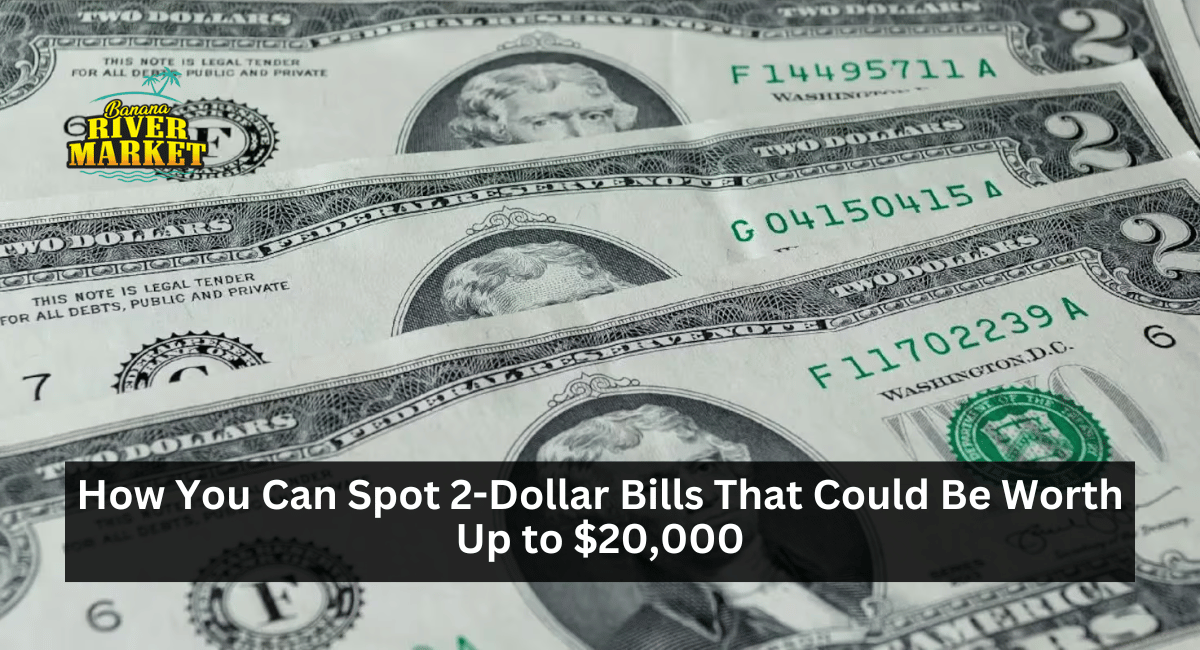Did you know that some $2 bills might be worth a lot more than two dollars? While most $2 bills in circulation are only worth their face value, a few unique ones have fetched as much as $20,000 at auction.
For collectors, these rare bills offer a unique investment opportunity, but how do you know if your $2 bill is worth more than pocket change?
This guide breaks down the essential features and details to help you determine if your $2 bill could be one of these valuable collectibles. Learn what to look for, how to evaluate your bill’s worth, and why some $2 bills are so desirable among collectors.
Key Factors That Determine the Value of $2 Bills
1. Unique Serial Numbers
The serial number is one of the most crucial elements in determining a $2 bill’s value. Bills with rare or unique serial numbers are highly collectible and can significantly increase in value. Here are the most desirable types:
- Low Serial Numbers: Bills with numbers starting with ‘00000001’ are highly prized.
- Ladder Numbers: Sequential patterns like “12345678” or “87654321” are rare and valuable.
- Solid Numbers: Repeated numbers, such as “88888888,” add unique value.
Finding any of these patterns on a $2 bill could mean it’s worth thousands of dollars.
2. Age and Rarity
Older $2 bills are generally more valuable, especially those printed before the 1920s. Bills from the 19th century or bills with limited circulation often carry historical significance and rarity, which drives up demand. Generally, the older the bill, the more likely it is to be rare and valuable.
3. Condition and Preservation
Condition is paramount in determining a bill’s worth. A well-preserved $2 bill that’s mint or uncirculated can fetch far higher prices than one that’s worn, creased, or faded.
Collectors place a high premium on bills free from damage, such as folds, creases, or stains.
To maximize the value, consider encapsulating the bill in a protective holder to keep it pristine.
Noteworthy Features on $2 Bills That Increase Value
To give you a clearer view of what these features mean in terms of value, here’s a table detailing some noteworthy characteristics of valuable $2 bills:
| Feature | Value Range | Description | Condition Importance |
|---|---|---|---|
| Serial Number “1” | Up to $20,000 | Very low serial numbers, starting with “00000001” | Mint or near-mint |
| Ladder Serial | $5,000 – $10,000 | Ascending or descending serial numbers | Important |
| Solid Serial | $5,000 – $12,000 | Repeated digits like “88888888” | Crucial |
| Pre-1920 Print | Up to $15,000 | Older bills with higher historical value | Essential |
| Uncirculated Bills | Up to $20,000 | Bills in perfect, unused condition | Critical |
How to Check the Value of Your $2 Bill
If you suspect that your $2 bill might be worth more than face value, here’s a step-by-step process to check its value:
1. Examine the Serial Number: Look for any unique serial numbers, such as low numbers, ladders, or solid numbers.
2. Identify the Bill’s Age: Older bills, particularly those from the 1800s and early 1900s, are generally more valuable than recent ones.
3. Assess the Condition: A bill in mint or uncirculated condition is far more valuable. Examine the bill for any signs of wear, tears, or discoloration.
4. Research Market Value: Check recent auction results or visit online marketplaces to compare prices for bills similar to yours. Professional coin grading services can also provide an accurate evaluation.
5. Consider a Professional Appraisal: If you believe you have a rare $2 bill, consulting a numismatic expert can give you a better idea of its market value and help you find the right buyer.
Why Collectors Pay High Prices for Certain $2 Bills
Collectors are willing to pay premium prices for specific $2 bills due to their historical significance, rarity, and unique features.
Bills with specific serial numbers or those from limited printings often represent a fascinating piece of history, making them desirable additions to a collector’s portfolio.
With the right combination of rarity, age, and condition, a seemingly ordinary $2 bill can be a valuable investment.
Commonly Asked Questions About Valuable $2 Bills
How can I tell if my $2 bill is valuable?
Check the serial number, print date, and overall condition. Rare serial numbers, older print dates, and bills in mint condition are often more valuable.
Are all $2 bills rare or valuable?
No, most $2 bills in circulation are only worth face value. However, some bills with rare serial numbers, specific ages, or in pristine condition can be worth significantly more.
What is a ladder serial number, and why is it valuable?
A ladder serial number is a sequential pattern, such as 12345678 or 87654321. The rarity of these patterns makes them valuable to collectors.
Does the bill’s condition really matter?
Absolutely. Bills in mint or uncirculated condition can command prices far above those in worn or damaged condition.
Where can I sell my rare $2 bill?
You can sell rare bills at auctions, through coin dealers, or on online marketplaces like eBay, depending on the bill’s value.
Conclusion:
While most $2 bills in circulation won’t be worth more than their face value, a select few can be extremely valuable.
If you happen to come across a $2 bill with a unique serial number, an old print date, or in mint condition, it’s worth taking the time to research its potential value.
By understanding the key factors that make a $2 bill valuable—such as rarity, condition, and serial numbers—you could uncover a hidden gem worth thousands of dollars. So, before you spend that $2 bill, take a closer look; it might just be worth much more!
READ MORE: Rare Bicentennial Quarter Worth $1 Million – Plus 5 More Valuable Coins Exceeding $51,000

